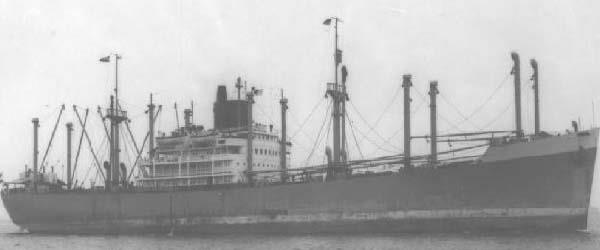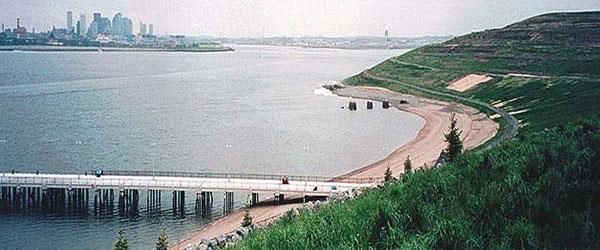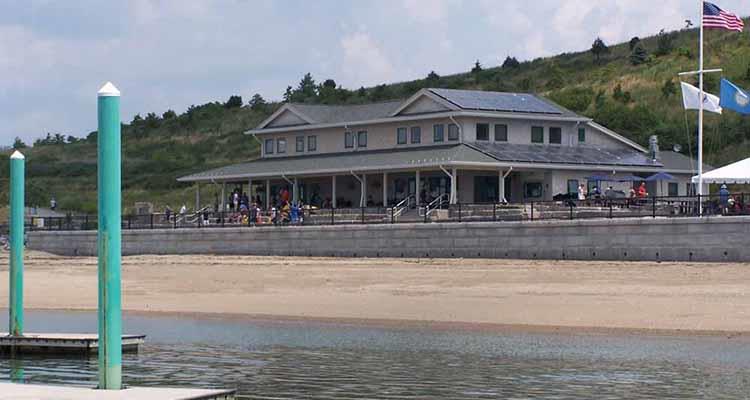When the first European explorers sailed into Boston harbour over 400 years ago, they were confronted with a bay scattered with islands, one of which comprised two small hills connected by a sandbar.
The shape reminded those explorers of a pair of spectacles; there is no record of what its earlier inhabitants had called it, but Spectacle Island it became. Throughout the following centuries its history has been remarkably varied and it even enjoyed a brief moment of fame for the part it played in a notorious murder mystery.
The unusual topography of Spectacle Island as those first explorers saw it resulted from the slow movement of glaciers that covered New England during the last Ice Age, which left behind the two hills known as glacial drumlins that form the ‘lenses’ of the spectacle shape. The island sits in Boston’s inner harbour, the city itself being situated at the end of the long, thin Shawmut peninsula where the Charles and Mystic rivers empty into the bay.
The wider harbour forms part of Massachusetts Bay. The city of Boston was founded by English settlers in 1690 but there is evidence that the island had been inhabited, or at least camped on, by Native Americans many centuries earlier. Archaeological digs revealed a midden containing animal bones, clam shells, pottery and spear points dating back to 535AD.
The modern history of the island began effectively in the mid-19th century. Speculators realised that its relative remoteness from the city could be used to their advantage. In 1847 two hotels were built there, well away from the prying eyes of the city authorities.
For 10 years these establishments operated as gambling dens until the police finally cottoned on to the hotels’ nefarious activities and closed them down. Another entrepreneur established a horse-rendering plant on the island in 1857 that produced, among other items, glue, upholstery, shoes, fertilisers, dog biscuits and baseballs.
The reputation of Spectacle Island among Bostonians as a source of foul odours was thus firmly established; a notoriety only enhanced when, in 1912, the rendering plant was expanded to become a garbage disposal facility. ‘A menace to humanity,’ the locals called the island, especially when an east wind blew the noxious smells shorewards towards them.
The rendering plant eventually closed down but the island’s fortunes were not exactly improved by its new use, from the 1920s, as a destination for the city’s rubbish. An incinerator, which was active until 1935, and a landfill site exacerbated the island’s environmental impact on the harbour.
For more than five decades Spectacle Island was Boston’s city dump, a reeking eyesore which would combust spontaneously in the summer months. The material oozing from the dump added to the raw sewage, sludge and chemicals discharged from the mainland contaminating the surrounding waters so that, by the 1980s, Boston harbour had gained the reputation of America’s most polluted harbour.

Spectacle Island SS Utrecht
A more positive feature was the lighthouses, or range lights, situated on the island. The first pair was established in 1897. A ship’s pilot would line the two lights up until they appeared as one, thus steering the craft on a safe course into the harbour.
A new set of two pairs of lighthouses, known as the Broad Sound Channel Inner Range Lights superseded the originals in 1903. Two of the towers housed fourth-order Fresnel lenses manufactured by the Chance Brothers glassworks in Birmingham. Pity the poor lighthouse keepers, though.
An inspection of the 2,000-gallon cistern located in the keeper’s house cellar in 1909 found that the water had absorbed an unsatisfactorily high amount of smoke from the neighbouring rendering plant. But that was not the only danger to the keepers. According to the celebrated New England maritime historian Edward Rowe Snow, author of The Islands of Boston Harbor (1935), Spectacle Island’s last lighthouse keeper was murdered at the outbreak of World War II.

Spectacle Island Cove Beach
Spectacle Island was no stranger to murder. According to Snow, six murders had occurred on or around the island, including the celebrated case of an heiress, Lynn Kauffman, that caused a media storm in 1959. The presence of an attractive, vivacious, 23-year-old divorcee was bound to cause a stir on the long voyage from Singapore to New York on the merchant ship SS Utrecht. She was on the return leg of a journey accompanying the wife and children of Dr Stanley Spector, a professor of Far Eastern Affairs at Washington University, St Louis, for whom she worked as secretary.
During the voyage Kauffman conducted an affair with the ship’s radio operator, Willem van Rie. It is unclear at whose instigation the affair began but, whereas, the further the ship sailed, Kauffman was convinced the relationship was to endure, the recently married van Rie saw the tryst merely as a pleasant diversion until they reached port.
On the evening of September 18, at 6.55pm, the Spectors called Kauffman for dinner. She replied that she was feeling unwell. When a steward enquired at the cabin 10 minutes later, he heard sobbing from within and left. At 9pm, and now very concerned, Mrs Spector went back to Kauffman’s cabin with the chief purser. They found the cabin empty; both portholes were wide open and Kauffman was nowhere to be found on the ship.
A few hours later, Kauffman’s partially undressed and badly beaten body was found washed up on Spectacle Island. According to the ship’s log, the Utrecht had rounded the island at 6.45pm, meaning that either the log was wrong, several witnesses were mistaken about the timing of events or the voice heard within the cabin was not Kauffman’s.
So began many instances of confusion and contradiction among the witnesses, the Boston medical examiner who performed the autopsy and the New York police detective who investigated the case.
Despite a host of conflicting evidence and unreliable witnesses, a Boston grand jury indicted van Rie for first-degree murder. The Utrecht’s owners, desperate to avoid the scandal of an employee being branded a murderer, hired a first-rank defence team. The case revolved around a battle of expert medical witnesses as to whether Kauffman’s injuries were definitive proof of murder or only indicative of such while admitting other possibilities. After a three-week trial, the jury deliberated through the night, van Rie’s fate in the balance. Their first vote was tied, and it took 14 more before a consensus was reached the next day: not guilty.

Spectacle Island visitors centre
At around this time, the dumping on Spectacle Island was stopped, by which time its size and shape had been altered by the addition of 30 acres. By the 1990s, Boston’s elevated six-lane Central Artery highway was clogged with traffic. With lack of space a problem, the only solution appeared to be to dig a tunnel under the city, which was to house a new, 10-lane, expressway.
But what to do with the 16million cubic yards of material that needed to be excavated during the ‘Big Dig’ as it became known? About a third was transported to Spectacle Island to cap the old landfill under 30 feet of earth. Topsoil and vegetation was added, creating a network of walking trails and viewing areas. The harbour waters have now been cleansed by improved management of sewage. Spectacle Island even has five acres of artificial reefs off its eastern shore.
Now covering 105 acres itself, Spectacle Island has been transformed into the most environmentally friendly island in the harbour. It is home to more than 100 bird species, and a wide variety of fish can be caught from the pier. The view from the north drumlin, at 157 feet the highest point in the harbour, affords stunning views, of the other 33 islands that with it now comprise the Boston Harbor Islands National Recreation Area, and of Boston itself.
But, if the history of Spectacle Island is remarkable, its name is by no means unique. A trawl of an atlas reveals no less than four other Spectacle Islands – all Down Under. The most prominent is in Sydney harbour. Its first use was as a gunpowder and naval explosives factory, and is still used by the Australian Navy today.
Up the coast, in the Hawkesbury River, lies another Spectacle Island, noted for its aboriginal rock engravings, which is now a nature reserve. Tasmania even has a pair of Spectacles: Spectacle Island and Little Spectacle Island lie in the Sloping Island Group off Tasmania’s south-east coast. But none can match the varied stories told by Boston’s own.
